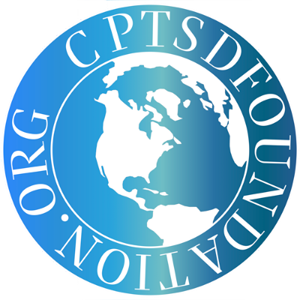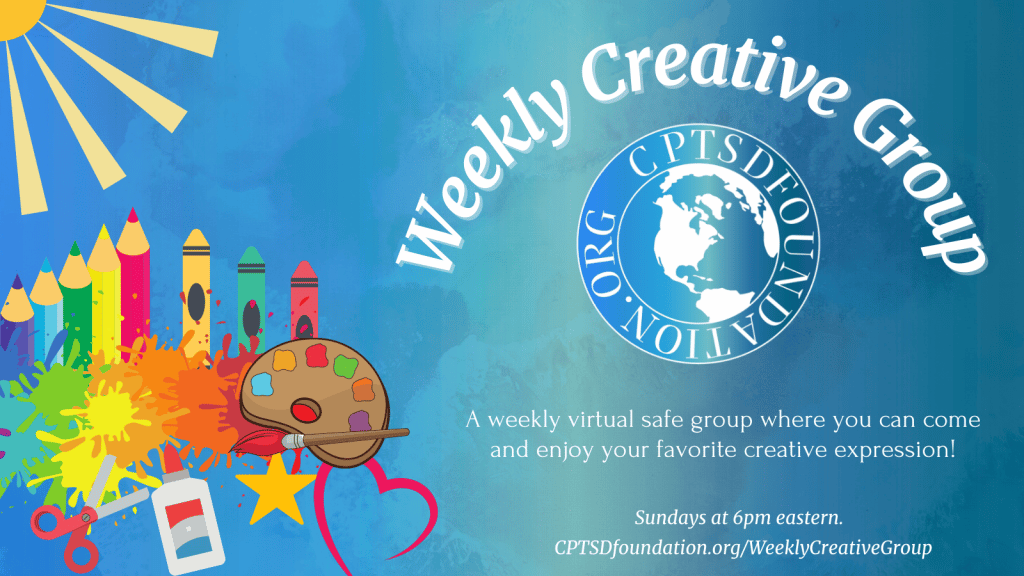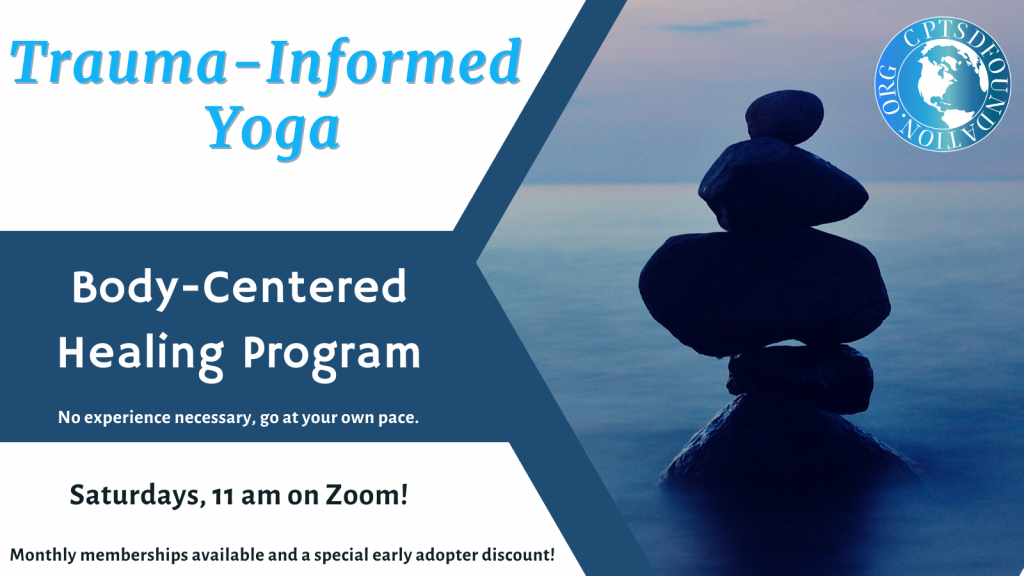This article was originally published on The Mighty.
I was sitting on the couch of the therapist I saw over 10 years ago. She had her Diagnostic and Statistical Manual (DSM) in her lap, and with my input, she was going over the symptoms of post-traumatic stress disorder (PTSD). I was convinced I had it, she was not. Turns out neither of us was wrong and neither of us was right.
As you’ve already guessed from the title, complex PTSD (C-PTSD) is what I’m talking about today. If you haven’t heard of it, you are in good company because, in most parts of North America, it isn’t an official diagnosis just yet. You will find it in the World Health Organization’s (WHO) classifications manual, so that’s very good news.
C-PTSD is similar in some regards compared to PTSD, but there are also some pretty big distinctions. These differences matter a lot for a variety of reasons, and I’d like to spend some time with you to walk through why these differences matter. If I had known this information 10 years ago, my treatment path would likely have been altered and ultimately more helpful. It’s my hope this information can do the same for you.
How is it different and why does it matter?
1. “Complex”
The C sitting in front of C-PTSD is a clear difference, but what does it mean exactly? The trauma associated with PTSD generally refers to a single traumatic event or possibly similar events in a short time frame. Complex refers to the traumas the individual experienced, as being long-standing. Often these occur in childhood, but can also occur during other points in life. Examples could include childhood abuse, living through a time of war, sexual exploitation, domestic violence, neglect, bullying and so forth.
This is an important distinction. For some folks who grew up in a traumatic environment or survived a long time in one, it can feel like in fact it wasn’t “trauma,” but rather it was just “life.” Being given the tools to recognize that this continual distress was not “ordinary,” and that it may have had significant impacts on your mind and body, is often an important first step in treating C-PTSD.
2. Symptoms
Here’s a quick overview of PTSD and C-PTSD (and please note this is merely a summary):
Folks who develop PTSD generally have experienced or witnessed trauma, and have developed disruptive symptoms involving:
- Reliving aspects of what happened.
- Alertness or feeling on edge.
- Avoiding feelings or memories.
- Challenging beliefs or feelings.
- Physical complaints, anxiety, depression, changes in the ability to function, and thoughts or actions of self-harm.
Folks with C-PTSD will have experienced longstanding trauma, and will likely have many of the above symptoms and these additional symptoms:
- Difficulties with controlling emotions.
- Feeling distrustful toward the world, or a major worldview change.
- Constant feelings of emptiness or hopelessness.
- Feeling damaged or different from other people.
- Feeling no one can understand you or what happened.
- Avoiding relationships, or finding trust difficult.
- Often experience dissociative symptoms.
- More frequent physical symptoms and regular suicidal feelings.
- Another distinction is one made by therapist and author Pete Walker who talks about C-PTSD involving “emotional flashbacks” rather than what would be considered traditional flashbacks. He has a great guide about that available here.
When I look at this list of additional symptoms, I understand why my therapist of 10 years ago didn’t consider PTSD to be a suitable diagnosis for me. It’s not her fault either, as neither of us knew then that C-PTSD existed. I often felt as though I had a “mild” version of PTSD, according to what the books said I should be experiencing, but then had this other part of me that was much more intense that I couldn’t understand.
Around five years ago, I became acquainted with the concept of C-PTSD and I dived into reading about it. I felt a wave of relief and belonging. It matters to me and many others that we have a category to fit into. Likewise, if you take a look at the symptom list for C-PTSD, you’ll see that there are often a lot of feelings of being “alone,” somehow different, or particularly damaged. Therefore, just knowing that there is a name for the disorder, that other people have it, and people are working on ways of treating it, can be quite healing in itself.
3. Treatment
The very first thing I want to say regarding treatment is this: If you have C-PTSD and you have found that treatment thus far in your life has been unhelpful, distressing, confusing, unpredictable or has even made things worse… you aren’t alone and there are probably reasons behind this.
One reason is that it is a new concept, that is not yet widely known or researched. Another reason is that a lot of practitioners may not be properly trained in how to address trauma in any of its forms, let alone when it is complex. Lastly, it is believed by some that some of the treatments normally used for PTSD or other anxiety disorders, could cause further distress, especially if not modified. There is a lot of discussion around the nervous system and dysregulation and how this could impact treatments that were previously assumed would be helpful — but instead may cause the individual (or their nervous system) to shut down or have a negative reaction.
On a positive note, I have noticed that a lot of therapists already follow a lot of the C-PTSD recommendations, often instinctually, without necessarily having been trained to specifically do so. Happily, we are also starting to get some great books, training, podcasts, support groups, and more — and I find that all to be very hopeful and promising! I will leave a small list of some helpful books below.
There are also some new thoughts about what medications might be helpful, and some doctors are starting to experiment with these possibilities. Just recently, my psychiatrist started me on a medication typically used for slowing the heart, but we have found great success in using it to keep my nervous system steady and prevent hypervigilance. I’m not offering that as a suggestion, but rather as an example that things can and do change for the better, in time.
C-PTSD and PTSD do indeed have lots of similarities, but as I’ve outlined here today, there are a variety of distinctions that are important to understand. Recognizing these differences can help with feeling understood, finding the right treatment, and guiding you to getting the support that’s needed. I’ve only scratched the surface of this topic, but I hope it’s been helpful, or you’ve learned something new.
As promised here are a few books you may find useful:
- “The Body Keeps the Score: Brain, Mind, and Body in the Healing of Trauma” by Bessel van der Kolk M.D.
- “The Polyvagal Theory in Therapy: Engaging the Rhythm of Regulation” by Deb Dana.
- “Complex PTSD: From Surviving to Thriving” by Pete Walker.
- “Healing Trauma: Restoring the Wisdom of Your Body” by Peter A. Levine.
- “The Complex PTSD Workbook: A Mind-Body Approach to Regaining Emotional Control and Becoming Whole” by Dr. Arielle Schwartz
There are lots of other great books, videos, podcasts, and websites on this topic, so be sure to do some looking around. Please share your favourite resources or other thoughts and ideas you have about this in the comments.
If you’d like to follow along with my journey, you can find me on Instagram as @mentalhealthyxe.

Heidi Fischer is a mental health advocate who lives in Saskatoon, Canada. Heidi enjoys writing about her personal experience with C-PTSD, Depression, and Anxiety. Heidi is the creator of a popular mental health Instagram called @mentalhealthyxe and can also be found on her website mentalhealthyxe.com.





Thank you Heidi for this post. My name is Elizabeth and I am a CSA survivor. Since writing my personal memoir, a lot of the deepest trauma memories has come back in force. I’ve come a long way in my healing and I want to help others like me who suffer from Complex PTSD.
Thank you Heidi for your article. I am a 52 year old from Australia who was diagnosed withCPTSD by my specialist therapist, 2 years ago. Finally, the pieces started to fit together! Prior to my diagnosis I struggled so much because my Doctor was not trained in this area and I felt as though it was just me and I needed to work harder to cope with my perception of life. I have learned so much since then and articles like this have been vital in raising awareness. Thank you 🙏
Thank you for sharing your story and all these great resources! I can’t wait to look through them all. That’s awesome news about changes in medications too.
A sad FYI: Most people don’t know, but Bessel van Der Folk was fired from his namesake clinic after years of harassing/traumatizing women. My therapist suggested Janina Turner as an alternative.
van der Kolk may not have actually done anything wrong. Per Wikipedia:
“In 2017, van der Kolk was terminated from the parent organization of the Trauma Center, Justice Resource Institute, due to allegations of creating a hostile environment that allowed van der Kolk, then executive director of the Trauma Center, to engage in abusive practices] Van der Kolk stated that the termination was an attempt by the Justice Resource Institute to mitigate its own legal responsibility for the alleged misconduct. The executive team of the Trauma Center unanimously protested this termination, and all senior members of the Trauma Center resigned. Van der Kolk filed a lawsuit against the Justice Resource Institute for several counts of action including misrepresentation and defamation. The suit ended in a Non-Disclosure Agreement (NDA). The suit was settled quickly out of court. In 2020, the Trauma Center at the Justice Resource Institute closed permanently.”